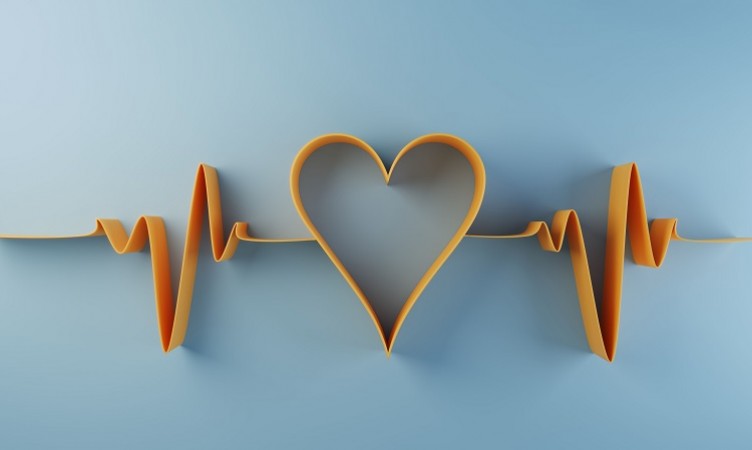
The aftermath of the COVID-19 pandemic has brought to light a concerning trend worldwide - an increasing number of people losing their lives due to heart-related diseases. What's even more alarming is that cardiac arrests, commonly referred to as heart attacks, are on the rise among young individuals. According to Dr. Rakesh Garg, a professor in the anesthesia department at AIIMS (All India Institute of Medical Sciences) and the Secretary of the Indian Resuscitation Society, there's a potential solution that could significantly reduce the death rate from heart attacks. If every family in a country has at least one person trained in CPR (Cardiopulmonary Resuscitation), the mortality rate due to heart attacks could decrease by up to 60%.
Understanding CPR:
CPR, which stands for Cardiopulmonary Resuscitation, is a critical life-saving technique that can make a substantial difference in the survival rate of individuals experiencing cardiac arrest. However, CPR knowledge is relatively limited among the general population. Dr. Rakesh Garg conducted a detailed analysis of four studies conducted in India, shedding light on the importance of CPR training.
CPR is a technique that involves chest compressions and rescue breaths to maintain blood circulation and oxygen flow to the vital organs, particularly the brain, in the absence of a heartbeat or breathing. It's crucial to perform CPR correctly to maximize the chances of survival for a person in distress.
How to Perform CPR:
Performing CPR is a straightforward yet highly effective skill that can be learned by anyone. Dr. Tarun Kumar, a professor in the cardiology department at AIIMS, provides step-by-step instructions on how to perform CPR:
Positioning: Place the person flat on their back on a firm surface.
Hand Placement: Kneel beside the person's chest and place the heel of one hand on the center of the chest, just below the nipple line. Place the other hand on top, interlocking your fingers.
Compression: Push hard and fast in the center of the chest, compressing the chest at least 2 inches deep. Aim for a rate of 100-120 compressions per minute. Allow the chest to fully recoil between compressions.
Rescue Breaths: After 30 compressions, give two rescue breaths. Tilt the person's head back slightly and lift the chin to open the airway. Pinch the nose shut and cover the person's mouth with yours to create an airtight seal. Deliver a breath that makes the chest rise visibly. Repeat this process for every two minutes of CPR.
Continue: Continue performing cycles of chest compressions and rescue breaths until medical help arrives or the person shows signs of life, such as breathing on their own.
The Importance of Prompt CPR:
Prompt administration of CPR can be a life-saving intervention. When someone experiences a cardiac arrest, their chances of survival decrease by 7-10% every minute that passes without CPR. Therefore, it's crucial for bystanders to start CPR as soon as possible.
Who Can Perform CPR?
Anyone can perform CPR, and it's not limited to healthcare professionals. In fact, in most cases, cardiac arrests happen outside of hospitals. Therefore, it's essential for those present at the scene, such as family members, friends, or bystanders, to initiate CPR until professional medical help arrives.
Training in CPR:
Learning to perform CPR correctly is essential. While the basic steps are relatively simple, proper training ensures that CPR is administered effectively. Organizations like AIIMS provide CPR training programs for individuals in schools, colleges, hospitals, legislative assemblies, airports, railway stations, and other public places.
Dr. Rakesh Garg emphasizes that CPR training should be widespread, and at least one person in every family should be trained in CPR. It's a skill that can be learned in as little as 15 minutes, and it has the potential to increase a person's chances of survival significantly if administered promptly.
Reducing Out-of-Hospital Cardiac Arrest Deaths:
Dr. Rakesh Yadav, a professor at AIIMS, highlights that worldwide, 10% of deaths occur due to cardiac arrest outside of hospitals. Therefore, increasing the availability of trained individuals who can provide CPR in the critical moments before professional medical help arrives can have a substantial impact on reducing mortality rates associated with cardiac arrests.
In the post-COVID-19 era, the rising incidence of heart-related diseases and cardiac arrests among all age groups is a significant concern. However, CPR training can be a game-changer in reducing the mortality rate associated with heart attacks. It is a simple yet highly effective technique that anyone can learn. By ensuring that at least one person in every family is trained in CPR, we can significantly increase the chances of survival for individuals experiencing cardiac arrest. It's time to recognize the importance of CPR training as a life-saving skill and take steps to make it more accessible to the general population.
If you are above 30-40, then definitely get these 7 tests done every year